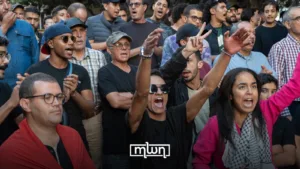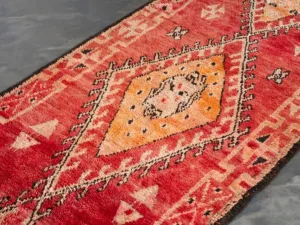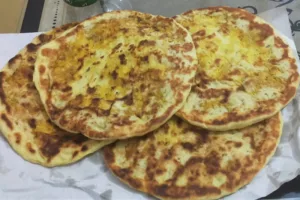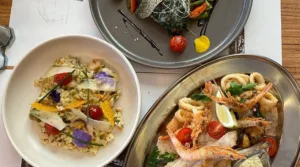Rabat — From east to west, Morocco is known for its diverse subcultures, with each region standing out through its own traditions and way of life. Take the South-East, for example; cities like Zagora and Tinghir don’t just have unique customs, but also their own signature flavors. Let’s discover one of their specialties: Khobz El Shahma, literally “bread with fat,” known in Tamazight as “Aghrum n Taddunt.”
Khobz El Shahma is a cherished culinary tradition that combines rich flavor with the warmth needed for cold winter days. It is a staple at breakfast and the star of the Ramadan iftar table.
Given the nature of work in such regions – from tending the oases and harvesting fruits to herding animals – eating Khobz El Shahma in the morning provides the energy and strength needed to fuel a long day.
What makes it even more special is its simplicity. The ingredients are basic and are found in nearly every household.
Ingredients
Dough:
- Wheat flour
- Yeast
- Salt
- Warm water
Filling:
- Onion, finely chopped
- Chilli pepper, finely chopped
- Carrot, grated
- Finely chopped lamb fat (shahma)
- Parsley and coriander
- Coriander powder
- Black pepper
- Ginger
- Paprika
- Cumin
- Salt
- Olive oil
Instructions
- Prepare the dough and let it rest briefly (but don’t let it ferment for the best result)
- Mix onion, pepper, carrot and fat, then drain them to remove any excess water.
- Transfer the mixture to a bowl and add the spices. (Note: the filling is not cooked separately, just drained and added directly.)
- Divide the dough into small balls and let them rest briefly. Flatten each ball slightly, add a spoonful of the filling, fold it over, and flatten again.
- Cook each filled dough on a hot pan until golden brown and fragrant.
Serving tip
For the best experience, Khobz El Shahma should be eaten hot, but rather straight from the pan to your plate or even your mouth! Traditionally, it is always accompanied by atay (Moroccan mint tea). Whenever Khobz El Shahma is on the table, atay is never far behind. Together, they create a classic South-Eastern Moroccan breakfast or a comforting snack that warms both the body and the spirit.
Bseha w raha!
















